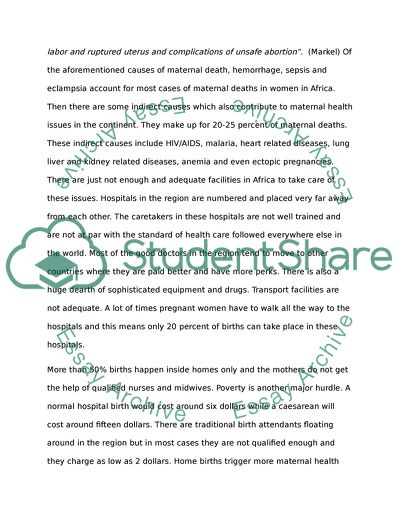Maternal Health Care in Africa Book Report/Review. https://studentshare.org/medical-science/1757065-maternal-health-care-in-africa-by-boniface-tatchwenglie-nasah-j-k-g-mati-joseph-m-kasonde
Maternal Health Care in Africa Book Report/Review. https://studentshare.org/medical-science/1757065-maternal-health-care-in-africa-by-boniface-tatchwenglie-nasah-j-k-g-mati-joseph-m-kasonde.


